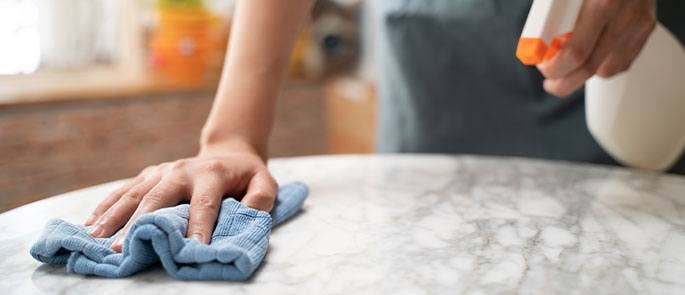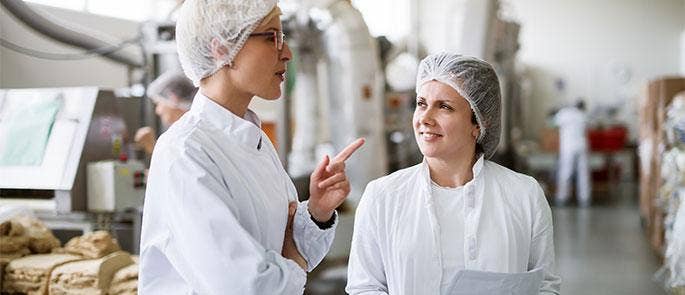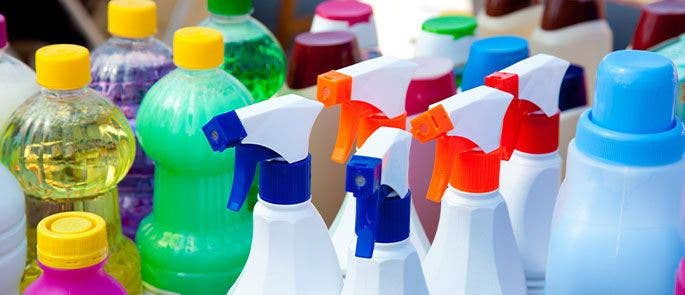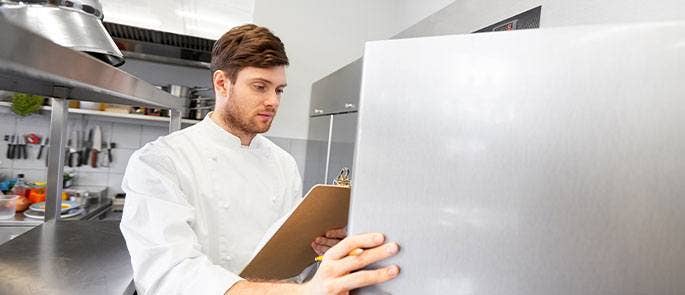Chemical Hazards in Food
Everyone working in the food and drink industry has a responsibility for food safety and for preventing contamination. Part of this involves preventing and managing chemical hazards in food, as these can cause serious long-term harm if consumed. In this article, we’ll explain what chemical hazards in food are, give some examples of where chemical hazards can be found and provide some top tips for preventing chemical contamination in your workplace.
What are Chemical Hazards in Food?
Chemical hazards in food are any type of chemical substance present in a food or drink product that can cause immediate or long-term harm to consumers. It may be that the chemicals are added intentionally but in hazardous amounts, such as additives and preservatives, or it could be a case of chemical contamination from toxins in the environment, unsafe food processes or even malicious intent.

Chemical contaminants can enter food products at any time during the food production process and at any point in the food chain. For example, chemical hazards may come from the environment, such as pollution, incinerators, contaminated land and water, plant diseases or in animal feed. Chemicals can also enter the food chain during processing and production, such as acrylamide during cooking, mycotoxins in storage or misuse of cleaning chemicals.
Alongside chemical hazards in food, the other types of hazards that make foods unsafe to eat are physical hazards and microbiological hazards, which cause food poisoning.
Examples of Chemical Hazards in Food
Chemical contaminants can enter food products at any point in their production, from farming and manufacturing to cooking and cleaning. Examples of chemical hazards in food include:
Mycotoxins
These are naturally-occurring chemicals produced by certain types of moulds and, when eaten in large amounts, can cause serious harm to consumers. The most harmful type is aflatoxins, which have the potential to cause cancer and/or problems with digestion, reproduction or the immune system.
In warm and damp conditions, mycotoxins can grow on all types of crops and foods, but particularly dried foods such as cereals, spices, nuts, dried fruit and coffee. Because mycotoxins are naturally-occurring, it’s impossible to remove them from foods completely. Instead, food safety controls based on HACCP should be used to reduce their levels to as low as possible.

Organic Environmental Pollutants
Also known as persistent organic pollutants (POPs), organic pollutants are chemicals that enter food from the environment where it’s grown or reared. At high levels, these types of chemicals can be harmful to animals and fish as well as humans.
Examples of environmental chemical hazards are pesticides, herbicides, fungicides and fertilisers used in farming, heavy metals such as lead, mercury and cyanide found in the earth and dioxins, often originating from animal feed.
Acrylamide
Acrylamide is a naturally-occurring by-product created when starchy, carbohydrate-rich foods are fried, roasted, baked, grilled or toasted at temperatures of 120 °C and above. It’s impossible to avoid acrylamide completely but high levels have been proven to be carcinogenic.
Foods that are most susceptible to developing high levels of acrylamide during the cooking process include potato chips and crisps, bread, breakfast cereals, biscuits and crackers. Find out more about acrylamide with our Short Guide to Acrylamide in Food.
Cleaning Chemicals
It’s easy to see how mishandled or misused cleaning chemicals can end up in food products if a work surface or tool isn’t adequately cleaned and rinsed or if they’re not stored safely. Sanitisers, disinfectants and bleaches are all incredibly harmful to health if they end up in food and drink intended for consumption.

Other areas where chemicals can enter food are during manufacturing, where lubricants and oils from the machinery in factories can contaminate products, as well as paints and varnishes being used in the food production area without appropriate food safety controls in place.
Chemical Food Crime
In some cases, chemical contaminants are intentionally added to foods as a result of food crime. The Food Standards Agency has reported on cases in the past where food has been deliberately contaminated with the intent of harming the general public.
Food crime using chemicals is rare but is still an important safety consideration, particularly for food manufacturers. Find out more about Whistleblowing on Food Crime in our article.
Looking to Learn More?
If you work in food manufacturing, catering or retail, then having an up-to-date knowledge of food hygiene and safety procedures is essential. Our range of online Food Hygiene Courses has something for everyone, whatever your role.
How to Prevent Chemical Hazards in Food
In order to prevent the contamination of chemical hazards in food, food business operators must have a food safety management system – a HACCP plan – in place to ensure all food safety risks have been identified and managed, including chemical hazards. Read more about the 7 Principles of HACCP or take a look at our HACCP FAQs for more information on creating a HACCP plan, plus our article on Improving Quality Control for food manufacturers.
Other practical tips for preventing chemical contamination of food include:
- Always keep food and chemicals separate, from delivery into storage. Food and cleaning products should never be unpacked or stored in the same area.
- Follow the manufacturer’s instructions for all cleaning chemicals to ensure they’re used safely. Never assume you know how something works.
- Label chemical containers clearly to ensure they’re never mistaken for food ingredients.
- Ensure food is kept covered when cleaning is in operation, if it cannot be moved to a separate area.
- When cleaning food preparation surfaces, make sure that the cleaning chemicals you use are suitable for surfaces touched by food.
- Make sure that any pest-control chemicals are used and stored correctly, away from food, and are clearly labelled.
- To control mycotoxins, ensure best practices are followed when growing and harvesting susceptible food products.
- Ensure dried food products are stored in moisture-free and temperature-controlled areas to prevent mould from growing and mycotoxins developing.
- To prevent the development of acrylamide, consider boiling or steaming foods instead of roasting, baking or frying.
- To reduce acrylamide levels, bake foods to a lighter, golden colour at a lower oven temperature. Avoid over-toasting or burning starchy food items.
- If chemicals get into food by accident, throw the food away immediately. Food contaminated with chemicals cannot be used.

Chemical hazards in food can occur at any stage of the food production process, from the environment and chemicals used during farming to factory machinery, cleaning products and cooking processes. Preventing chemical hazards in food requires a comprehensive HACCP plan and stringent food safety processes that all food handlers must follow at all times.
Further Resources:
- Food Hygiene Courses
- Why is Food Hygiene Training Important?
- What are the 7 Principles of HACCP?
- What is ISO 22000 – Food Safety Management?







